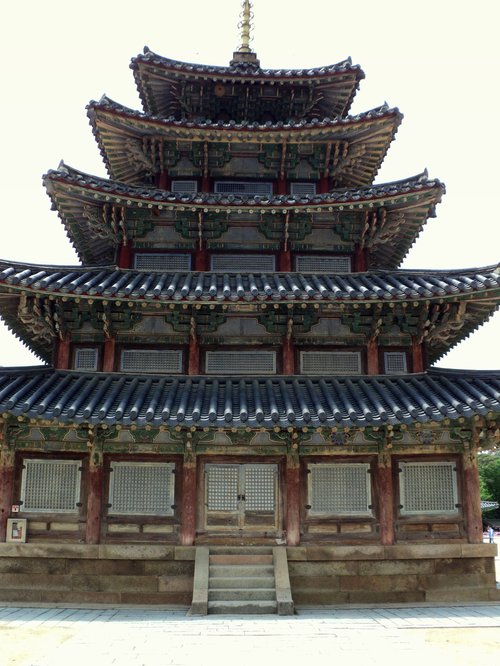Many visitors to Korea visit Bulguksa or Haeinsa. Both contain Buddhist treasures and provide a great introduction to Korean temples. Yet, I would claim they are not the best representative examples of Korean Buddhism. Here is a great serial WHS for any traveler interested in Korean temples.
Firstly, there are no representative fully intact, active Buddhist temples in Seoul or Gyeonggi-do that truly stand out. This is because during the Joseon dynasty Confucianism was central to the state. Buddhism had not been the state religion since the time of Goryeo. This nomination is sensible in focusing on mountain temples in the more rural areas of Korea. These temples are well-preserved, highly authentic, and most (if not all) have more than one national treasure. Each one of these 7 temples has features or artifacts that make them unique.
I visited 4 mountain temples included in this serial property.
1) Beopjusa (Boeun), 2011
2) Buseoksa (Yeongju), 2016
3) Magoksa (Gongju), 2016
4) Tongdosa (Yangsan), 2025

Beopjusa is located in the heart of Korea. Many people visit the temple because it is the starting point for the trek to the summit of Songnisan National Park. The temple has multiple national treasures and treasures. Two noteworthy national treasures are the only preserved 5-story wooden pagoda in Korea and the beautiful Goryeo era rock etching. I found both spectacular. Korea used to be filled with wooden pagodas from 3-9 stories. An incredible number of them were burned down during the Samurai invasion in the 1590's. Some that survived into the modern age were lost during the Japanese colonial period and the Korean War. This makes Beopjusa particularly special. The 5-story wooden pagoda dates from 1624 and is the only one of its kind left in Korea. The location of the temple is just outside the town of Boeun. This small town is worth a visit for a few reasons: Beopjusa temple, Samnyeonsanseong Fortress, and Songnisan National Park.
Magoksa, which is conveniently located near Gongju (Baekje Historic Areas WHS) is quite unique in its layout, almost surrounded by a river. Another special quality of this temple is the Ocheung stone pagoda, which is one of the few examples of Tibetan architectural elements in Korea.
Buseoksa is known for its national treasures, one being a wooden main prayer hall built during the Goryeo Dynasty. Muryangsujeon is the second oldest wooden building in South Korea, dating back to 1376.
Tongdosa is increasingly being well- received by our community as one of the great temples in Korea and I cannot disagree. Of all the temples inscribed in this serial WHS, it feels the most active. I used public transportation quite easily from Busan for an enjoyable 1/2 day trip.
All four temples I visited are worth exploring to enhance your understanding of Korean Buddhism, in fact each temple is active with practicing monks and some have popular temple stay options. I tend to agree with ICOMOS on many of their evaluations (they inquired why Hwaeomsa was not included) and I have to agree, its a temple that should have met most criteria. However, I disagree with their recommendation to drop three of the selected mountain monasteries from the original nomination. There just wasn't much of a justification put forward, only they were slightly smaller or perhaps less important historically. Nevertheless, these temples collectively are some of the most representative Buddhist temples in Korea. Arguably, even more so than Bulguksa and Haeinsa which are exceptional for different reasons.
Flickr Album